#How to make your AI-generated content sound more human

Table of Contents
Leverage AI like ChatGPT to generate more human-sounding long-form content. Refine prompts with details to produce engaging articles.
Fortunately, there are techniques you can use to make AI-written text more human-like, engaging and fun to read.
This article will explore ways to get more life-like, conversational content from AI. Specifically, we’ll look at how to customize the prompts you give ChatGPT so it better understands the tone, emotion and audience you want to target.
Setting yourself up on ChatGPT
You need a user-friendly interface through which to interact with AI and also to refine your generated output.
Most people are more familiar with OpenAI’s ChatGPT than other AI interfaces. As such, I’ll focus on guidance for ChatGPT (though many of my hints will likely be useful for multiple AIs).
To get the most out of the tool, sign up for ChatGPT Plus, which costs just $20 monthly.
This will give you access to OpenAI’s powerful GPT-4 model, which is significantly more powerful than GPT-3.5. Though slower than GPT-3.5, it remains fast enough for productive long-form content generation and refinement.
If we were generating tens of thousands of shorter snippets via OpenAI’s API, it’s possible that GPT-3.5 might be the tool for the job due to its superior response speed. We’re not doing that here, so I advise using the GPT-4 model.
Once logged into ChatGPT and upgraded to ChatGPT Plus, you can click here to change the model to GPT-4.
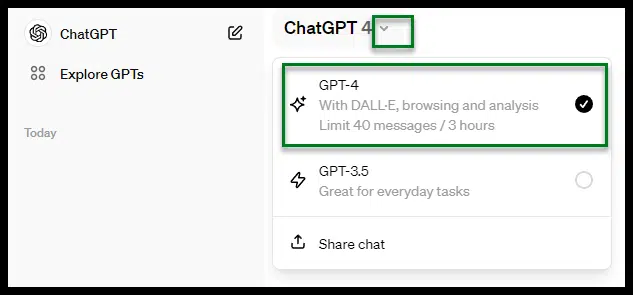
ChatGPT can help you decide how to craft human-like content
You can begin by asking ChatGPT directly for help in terms of building your prompts (chat messages) so that they result in more human-like output:
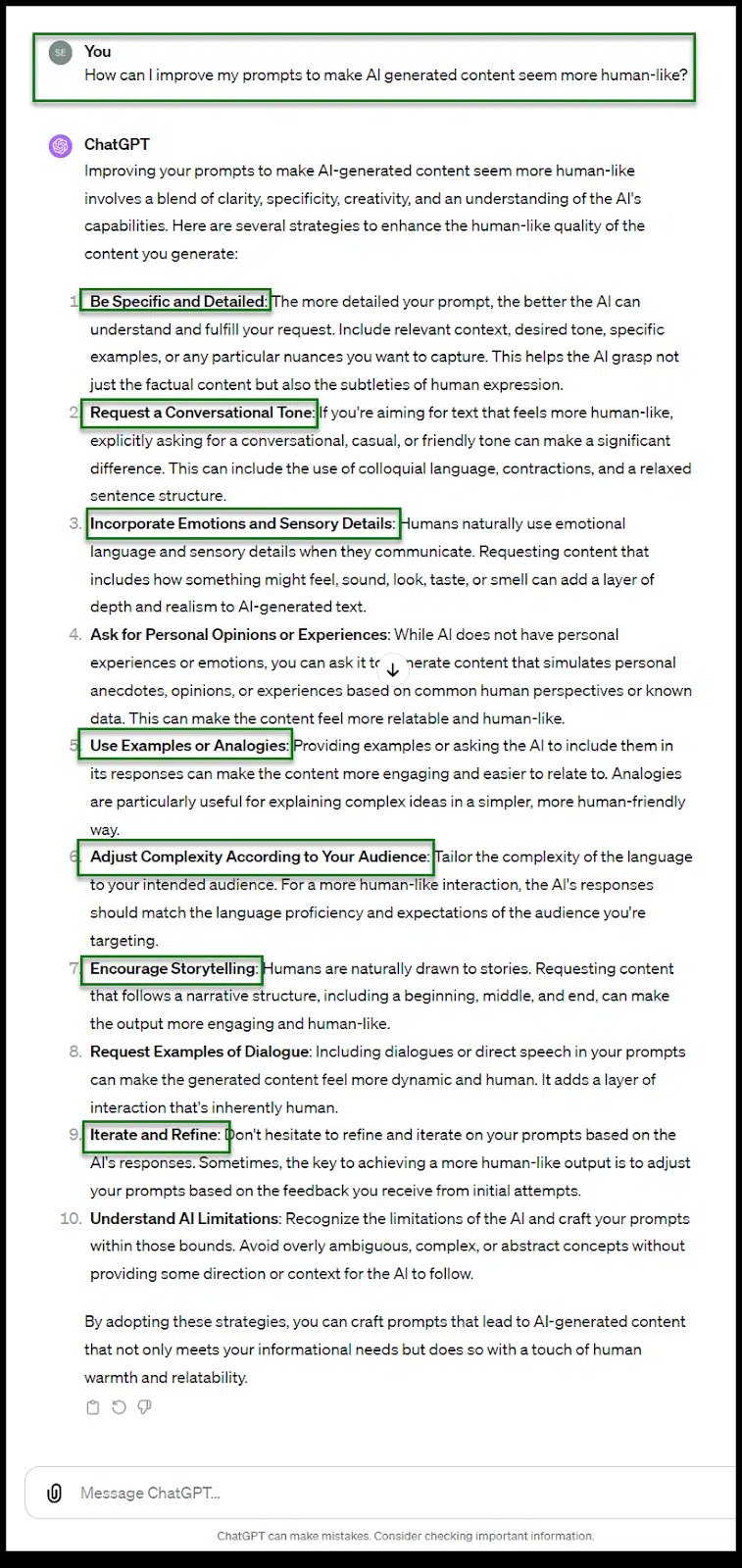
Several of these listed items could prove extremely useful to us. Let’s explore this in more detail.
Dig deeper: ChatGPT and SEO content: Where do we go from here?
Building a sample blog post
You can start out with a simple prompt such as “Please write a blog post on the benefits of solar energy instead of wind farms.”
ChatGPT will have a go at producing something, even without too much direction:
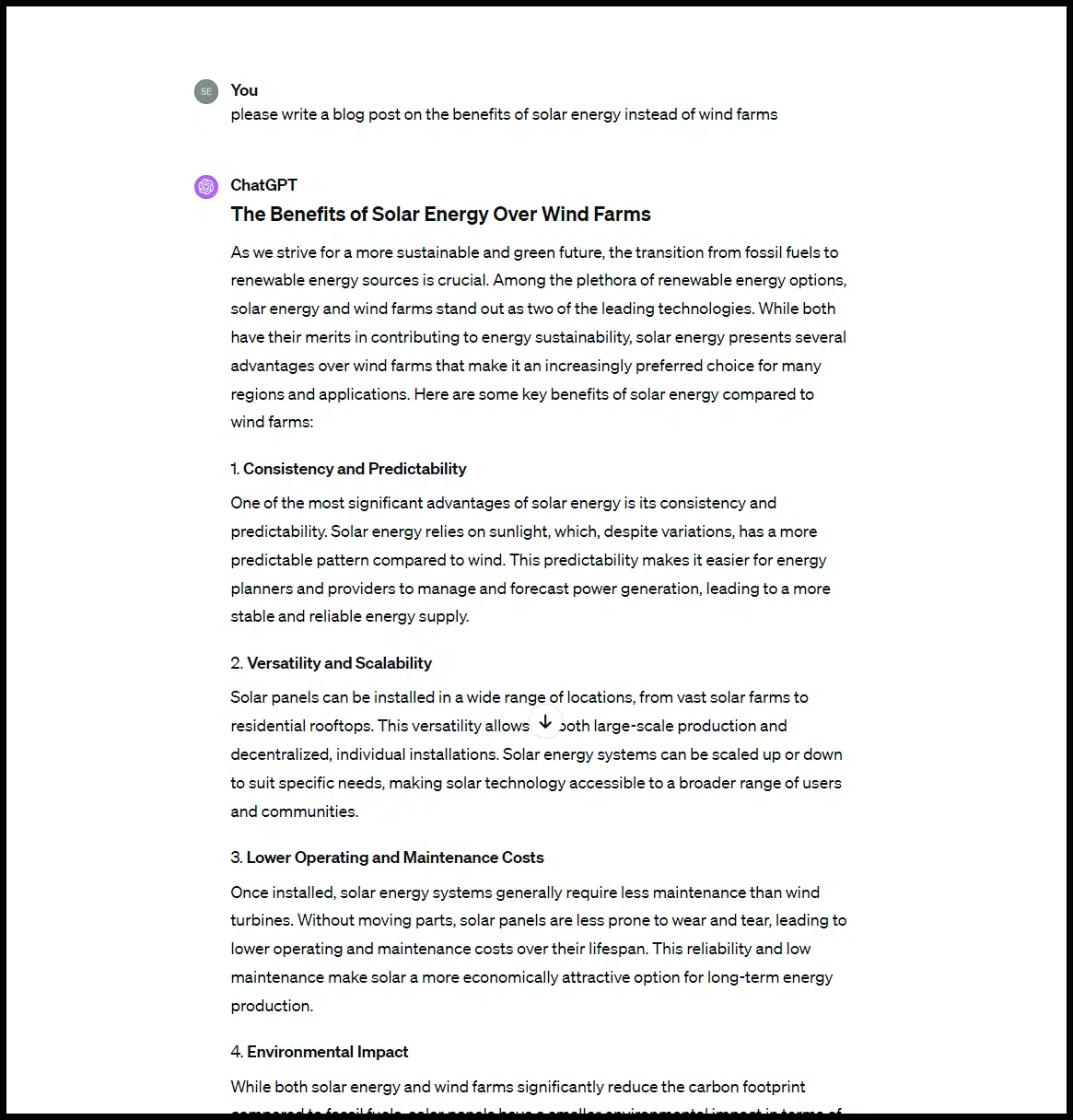
This is fine, but it’s not too detailed and could sound “more” human. So far, we have defined:
- A topic.
- A content type (e.g., blog post).
What else could we define? Here are some options:
- We could load up ChatGPT with some specific details. For instance, the author’s intention is to convince authorities to build more solar farms (since wind farms are often noisy and visually intrusive to those who live near them). We could also state that solar farms may be easier to maintain than wind farms since they have no moving parts.
- We could request a conversational tone. For example, technical and informational, with some creative flair, so it doesn’t get too dry or boring.
- We could request a post more likely to elicit certain emotions from human readers. For example, we’d like the readers to feel very positive about solar energy’s benefits compared to noisy wind farms.
- We could ask ChatGPT to include some examples and analogies, which will help the content to sound more human. We can also ask for an overarching storytelling–style narrative.
- We could specify a type of audience so that ChatGPT can adjust the reading level of the content more accurately. For example, this content may be read by the general public and decision-makers in the renewable energy sector. As such, it must be simple to understand yet must also be detailed enough to be truly convincing.
- We could specify a rough anticipated word count range. ChatGPT isn’t perfect at this, but it usually lands somewhere within the right ballpark. In this case, 1,000 to 1,200 words.
Adjusting and enriching your prompt
Now that we have decided upon some additional details to include within our prompt, it’s time to put them to use.
To do that, we need to fundamentally restructure our prompt, including all the necessary elements:
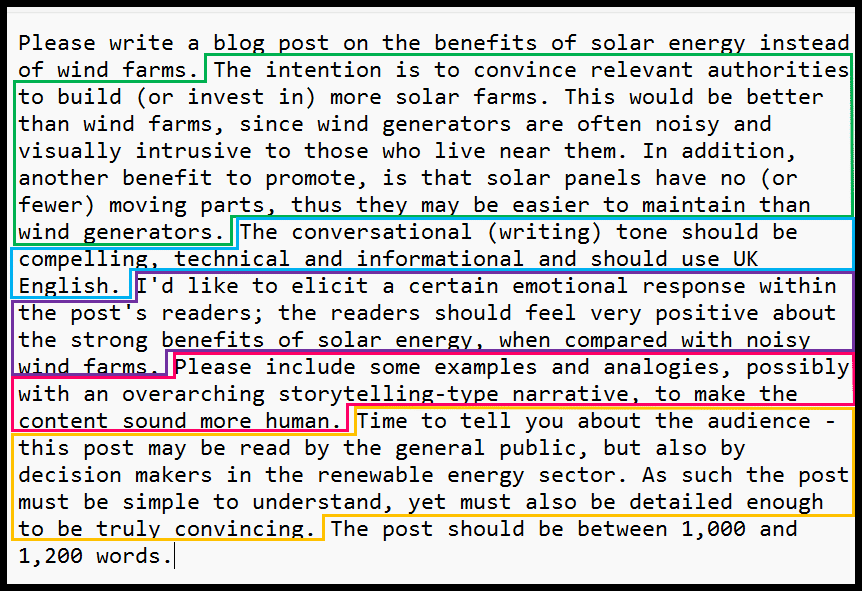
As you can see from the above, we have accounted for all the details and elements we wished to add to our prompt. There’s a lot more detail here than there was at the start.
The prompt has expanded from 15 to 197 words (over 1,000 characters). This is roughly what you should be aiming for. Now it’s time to process our new prompt.
Dig deeper: Advanced AI prompt engineering strategies for SEO
Results from an enriched human-centric prompt
It’s immediately obvious that the AI is responding in a more human, more structured way – complete with formatted headings:
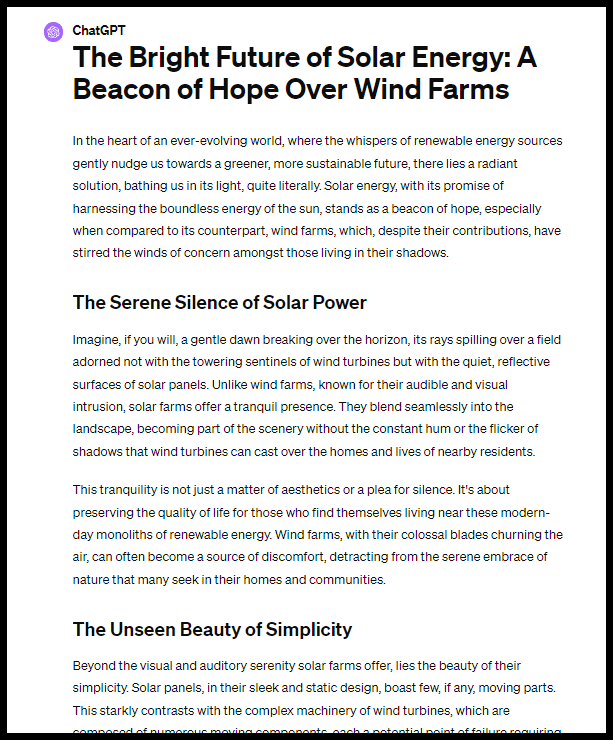
You can view the complete 851-word blog post here. It’s not as long as we wanted, but it’s close to our target length.
Iterating and refining the content
Remember that you’re interacting with AI via a chat interface to iterate and refine the AI’s output. You could process follow-up prompts such as:
- This is really great, but it’s not quite long enough. Can you expand on a few points to make the word count slightly longer?
- I really like this post, but I feel that the writing tone is too informal. Please make the content sound a bit more formal and fact-driven.
- Please re-write the post in the style of [famous editor or well-known columnist name].
- Please add a bullet point summary at the top of the post.
As you can see, there are any number of ways to refine your AI-generated content:
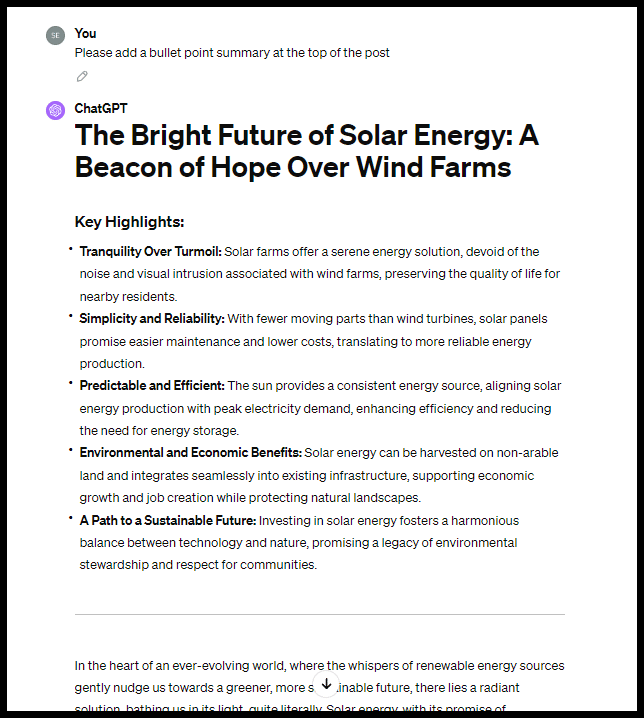
Once you are done refining, your content is complete. You can enhance it with your human creative spice, fact-check the produced content and ensure that formatting matches your expectations.
Don’t forget the limitations of AI-generated content
AI-generated content is imperfect:
- Often, you will need to fact-check the produced content or run a human editorial lens over the top of it.
- AI can begin to “infer” information from one place to another (a.k.a. “hallucination”). For example, you write an article on a new product and ask AI to include a table of product specifications. Since the product is new, AI pulls the specifications in from another similar product which it knows about (resulting in factually incorrect content).
- Avoid overly ambiguous, complex or abstract concepts without providing some direction or context for the AI to follow.
Enhancing AI-generated material
This article was written by a human. However, these conclusions (drawn from my article) were not. Here is an AI-generated (ChatGPT / GPT-4) conclusions summary for this post:
- Embrace advanced AI models for content creation. Use powerful AI models like GPT-4 for generating long-form content, taking advantage of its capabilities to produce more detailed and human-like output.
- Customize prompts for human–centric output: Refine AI-generated content by providing detailed prompts that include the article’s purpose, desired tone, emotional impact, specific examples and audience considerations to ensure the content is engaging and tailored to human readers.
- Iterate and refine for perfection: Use the AI’s interactive nature to refine and adjust the content based on feedback, ensuring the tone, length and style meet your specific needs for human-like engagement.
- Be mindful of AI limitations: Recognize the need for human oversight in fact-checking and editing AI-generated content to correct inaccuracies and add a personal touch, acknowledging that AI can sometimes produce erroneous or generic outputs.
- Utilise AI for diverse content needs: Leverage AI not just for web content but also for internal knowledge bases, print materials and other forms of communication, adjusting the approach based on the context and audience.
- Optimize content for emotional and visual impact: Include elements in your prompts that encourage the AI to create content with emotional resonance and visual appeal, making it more relatable and engaging for human readers.
- Balance technical information with creative flair: Direct AI to blend technical information with conversational language and creative elements, making complex topics accessible and interesting to a broad audience.
- Leverage AI for storytelling: Encourage using storytelling, examples and analogies in AI-generated content to make it more compelling and memorable for readers.
- Adjust for audience and purpose: Tailor AI-generated content to the specific audience and purpose, whether convincing decision-makers, educating the general public or engaging a niche community.
Remember, even if you don’t want to use AI to produce long-form content. You can use AI to great effect for summarizing and condensing human content.
If you liked the article, do not forget to share it with your friends. Follow us on Google News too, click on the star and choose us from your favorites.
If you want to read more like this article, you can visit our Technology category.



